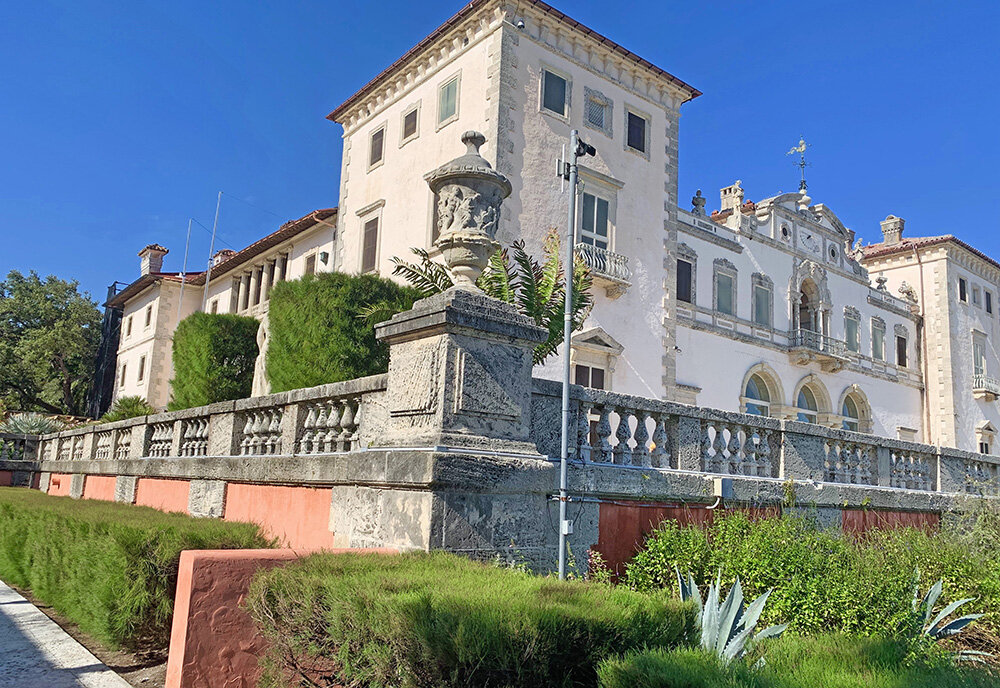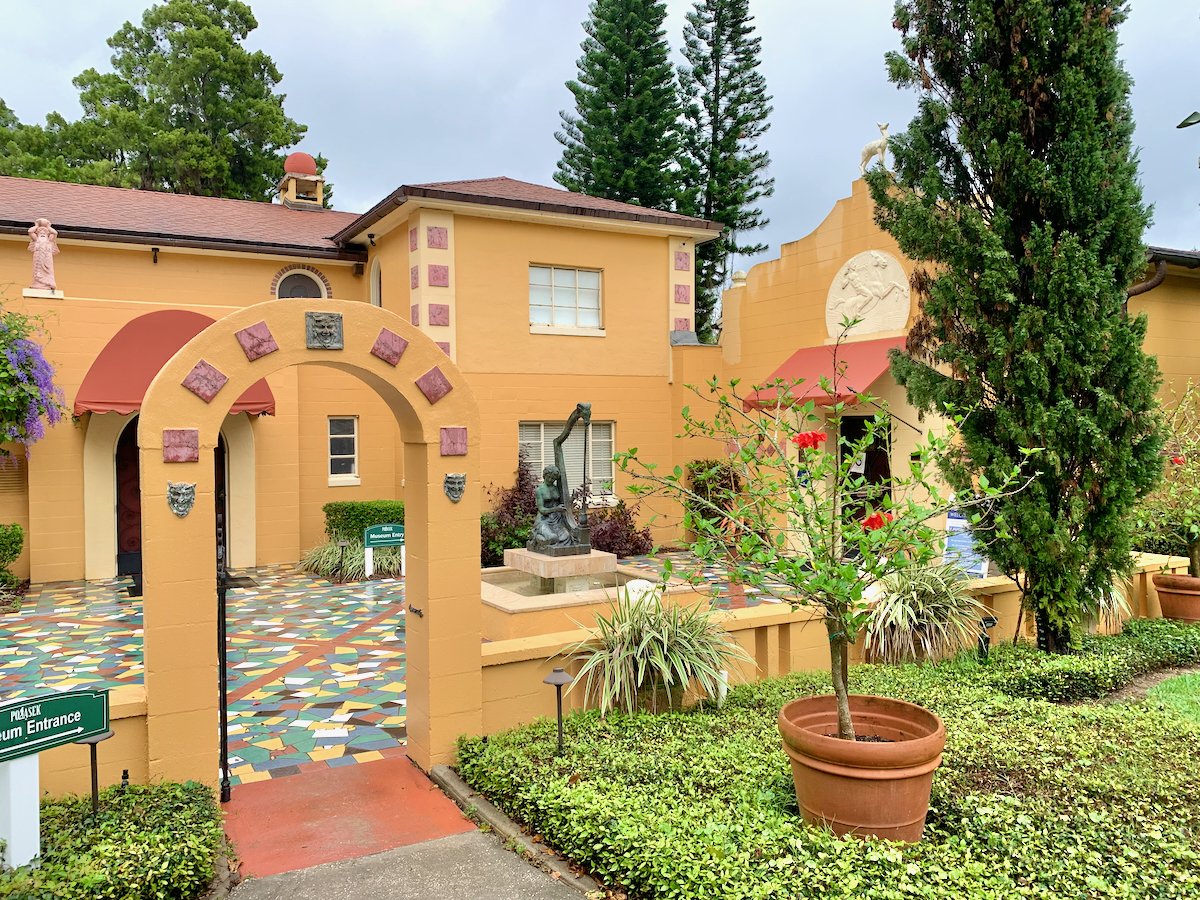Vizcaya: Miami's Gilded Age Estate
/Vizcaya is one of the gardens included in The Garden Tourist’s Florida Tour in March 2022. See Garden Travel.
This article is an excerpt from The Garden Tourist’s Florida book, available for preorder here.
Vizcaya is a stunning Gilded-Age mansion surrounded by formal gardens overlooking Biscayne Bay in Coconut Grove. The gardens are notable for introducing classical Italian and French design aesthetics into a subtropical habitat and climate, and creating formal gardens using tropical and exotic plants.
Born in 1859 in South Paris, Maine, James Deering was a retired millionaire and a bachelor in his early fifties when he began to build his magnificent estate in South Florida. He was afflicted with pernicious anemia, a condition for which doctors recommended sunshine and a warm climate. Vizcaya became the place where he hoped to restore his health. He loved sailing and boating, and was greatly interested in landscaping and plant conservation. The creation of Vizcaya incorporated both hobbies, and became the engrossing pastime of the last years of Deering’s life.
James Deering by John Singer Sargent
Deering collaborated on the design of the villa with architect F. Burrall Hoffman, Jr. and interior designer Paul Chalfin. Deering and Chalfin spent many years traveling through Europe, collecting ideas for the Florida estate and purchasing art, antiquities and furnishings. The duo imported gilded panels, carved mantels and fresco ceilings from Tuscany and France to line the villa walls. Construction began in 1914, but it took years to perfect the mansion’s 70-plus rooms, half of which overflow with treasures dating back to the 15th century. Inlaid marble floors, stained glass doors, silk-crowned beds, hand-painted murals and Chinese ceramics all combine to create sumptuous interiors that rival palaces in Europe. Although historic in architectural style, the home incorporated all of the modern technology available at the time, such as a telephone switching system and a central vacuum system.
The gardens were designed by Colombian-born landscape architect Diego Suarez. Suarez adapted classical European Renaissance and Baroque landscape design to Miami’s subtropical climate, terrain and plant material. The gardens were divided into garden rooms and enclosed by ornate walls and hedges. Chalfin adorned them with an abundance of architectural structures, columns and urns, elaborate fountains, and antique and comissioned sculptures. Many of the architectural elements were made of local coral stone which is very porous, and weathers quickly. To further the appearance of age, mature trees were planted in the garden, along with vines and plants that would drape themselves over the garden structures.
the garden mound
The gardens are connected to the house by the large South terrace. The terrace overlooks a large geometric parterre garden bordered by two semicircular pools. A third large pool with a central island is surrounded by low hedges whose exaggerated perspective lines that dramatize the formal geometry of the gardens. The Garden Mound is the focal point of the gardens, crowned with an ornate summerhouse known as the Casino, and adorned with a grand cascade and grottos. Other garden areas include the evocative Secret Garden, the intimate Theater Garden, the playful Maze Garden, the Fountain Garden, and a charming Tea House overlooking the Bay. The formal gardens are surrounded by 25 acres of Rockland Hammock, which is the native forest in this part of Florida.
The Teahouse
The East Terrace faces Biscayne Bay and the Barge, a breakwater built to protect the house and terrace from waves. The Barge was designed to look like a boat with fancy balustrades and statuary sculpted by American artist Alexander Stirling Calder. It was constructed of local limestone, which is very porous. The salt water and storm waves have eroded the structure and its decorative reliefs, and rising water has submerged the lower landing steps.
the barge
Deering’s occupancy of Vizcaya began on Christmas Day, 1916, with an elaborate ceremony complete with gondolas, cannons and friends dressed in Italian peasant costumes. From then until his death in 1925, Deering spent the winter months at Vizcaya, usually with family and celebrity guests. A staff of 16 was required for the house, while an additional 26 gardeners and workers maintained the gardens and outbuildings. Vizcaya was designed to be a self-sufficient estate to compensate for the limited commodities and services of early 1920s Miami. Some of the staff lived in the main house, while others resided in the Village–a complex of cottages, greenhouse, garages, workshops and farm buildings that supplied fresh flowers, fruit, vegetables, milk and eggs for the household. The Village is currently being restored to tell Vizcaya’s full story and provide additional spaces for programs and community outreach.
The village, photo by 305hive.com
After Deering died in 1925, Vizcaya was eventually passed down to his two nieces. The property suffered major damage from two hurricanes, which destroyed many garden statues and furnishings. In 1945, the family transferred the Lagoon Gardens and the southern grounds to the Diocese of St. Augustine and Mercy Hospital. It opened as a public museum in 1953. Restoration efforts continue on the mansion, gardens, and historic Village. In 2021, Vizcaya restored its historic Rose Garden, which had been destroyed in the Great Hurricane of 1926. Eighty-five antique roses were selected from the Antique Rose Emporium in Texas, ensuring that the new plants will be suitable for Miami’s tropical climate.
Vizcaya: 3251 S. Miami Ave., Miami, FL 33129. 305-250-9133. vizcaya.org
Vizcaya is open Wednesday–Monday, 9:30–5:30
You Might Also Like

























